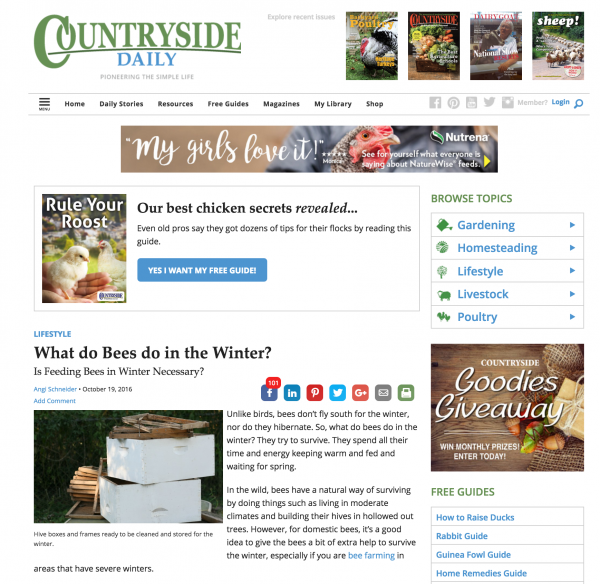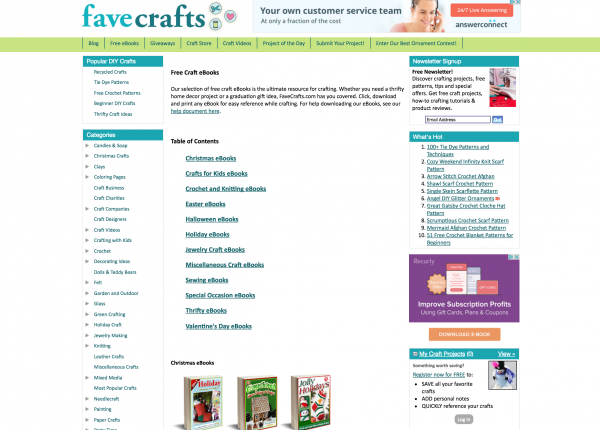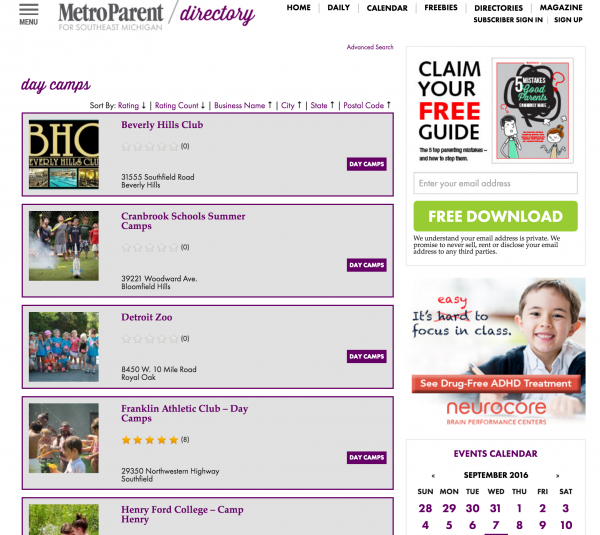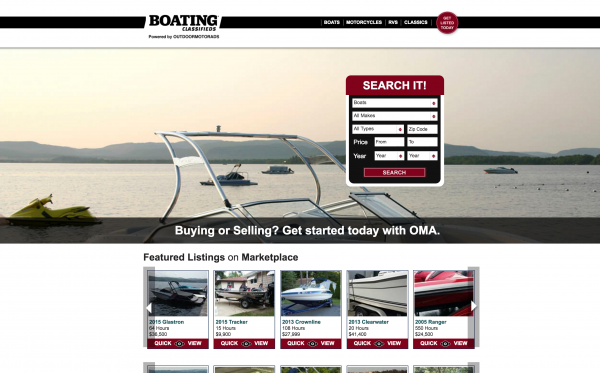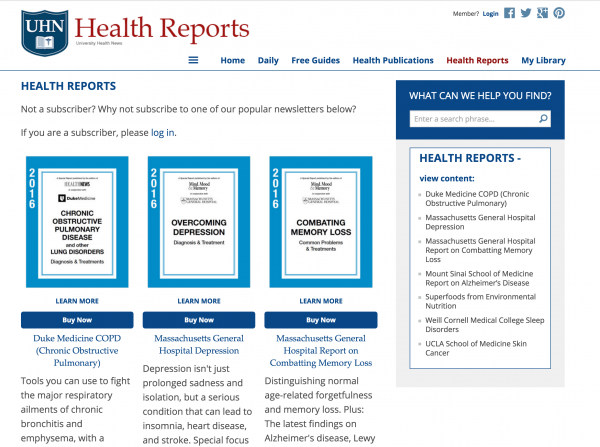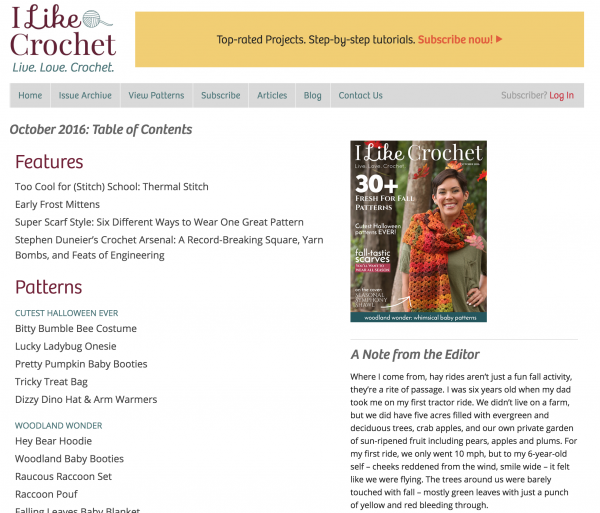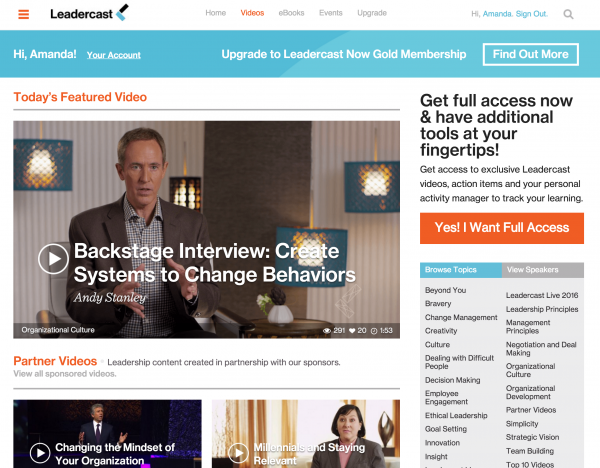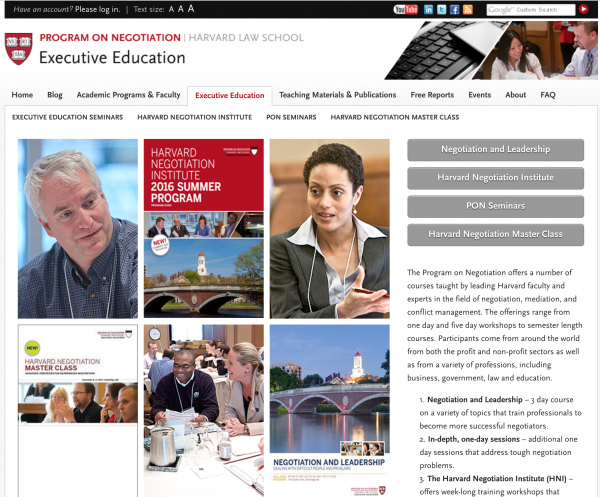Coming up with the right content business model(s) can be the biggest stumbling block for those looking to grow a publishing business.
Choosing your content focus is a business-critical decision, as the focus you choose pretty much dictates your chances of success with multiplatform publishing. However, more serious than the focus on content, is the business model itself.
It’s necessary to know the most ideal business model(s) for publishers, to be able to develop your strategic plans for CAROTME (content, audience, revenue, organization, technology, measurement, and economics). Not considering the content business model is a major mistake some publishers make.
We have identified 11 content business models that Mequoda member companies have engaged in profitably. These include:
- Portal
- Freebie
- Directory
- Calendar
- Community
- Classified
- Book
- Magazine
- Newsletter
- Course
- Event
[text_ad]
The essential attributes of each of these content business models are:
Top-Level Function: Each of these business models has a core function they are designed to serve – building an audience, which we refer to as creating Affinity or directly monetizing content which we refer to as Premium. The revenue generation for affinity business models is sponsorship because the content is open and free to users, and much of it is even free to visitors who are not registered. The Premium business models require a greater level of commitment from users, which is often in the form of payment but may be in the form of additional time or travel in the case of an event.
Minimum Information Unit (MIU): MIU is the term information architects use to refer collectively to “chunks” of content. Some examples of MIUs include:
|
Medium |
MIU |
|
Book |
Chapter |
|
Magazine |
Article |
|
|
Post |
|
|
Tweet |
|
Directory |
Listing |
|
|
Search result |
Revenue Generation System: Who pays is obviously a fairly important factor when considering business models. Some models are exclusively paid for by sponsors with users receiving the content for free. For example, traditional broadcast TV and controlled-circulation magazines. In other models, the user pays, such as a paid subscription to a financial advisory service. Some models lend themselves to a blend of sponsor and user revenue which we refer to as “hybrid,” like paid subscription magazines that also sell advertising or events that charge for admission while also charging sponsors to exhibit. And some models can operate as sponsor or user paid.
MIU Frequency: While frequency can vary from instance to instance, different models tend towards different frequencies. So, for instance, a magazine or newsletter will typically have a weekly, twice-monthly, weekly or quarterly basis. At the other end, a portal will have posts on a daily, hourly, or even shorter basis.
Subscriber Contact Frequency: As with MIU frequency, subscriber contact frequency varies, but we categorize by daily or weekly to indicate a high or low frequency.
Membership Cost: Users can join or subscribe to some websites for free while others require payment. The business models that rely primarily on sponsorship revenue also, not surprisingly, tend to be free to join.
The Characteristics of Content Business Models

Our purpose in using these criteria is to help you understand the fundamental characteristics and uses of each of the content business models. In thinking about these criteria, please keep in mind that we are talking about the most common attributes. In virtually every instance, it is possible to find examples of exceptions to the general rules we’ve laid out in the table above.
We’ll now discuss each of these content business model and their niche media mentors in a bit more detail.
The first 6 content business models are affinity in their top-level function, meaning they are used primarily to build an audience with content that is free to that audience and often monetized by sponsors.
Portal Content Business Model
A portal content business model is a free subscription website that aggregates content from multiple sources. Portals are intended to build and feed an audience; they are specifically designed for organic SEO marketing, email marketing, list building, and lead generation. Portals publish content for free in a blog-like format, and give away free products in exchange for an email address. The names collected through the portal content business model are used to increase revenue through a magazine content business model and other content business models like events, books, and courses.
By far the most widely used subscription website content business model, portals generate value from both the users and the sponsors.
When a publisher is ad-driven, sponsors pay money while users pay not with money (usually all portal content is free) but with time and information. They spend time viewing web pages, emails, and RSS feeds, thus creating advertising inventory that can be used to sell the publisher’s products (internal advertising) and/or sold to third party sponsors (external advertising) on a CPM (cost per thousand), CPC (cost per click), CPA (cost per action), or other sponsorship basis.
Examples: Mequoda Systems National Association of Plan Advisors (NAPA) and Countryside Daily are the quintessential niche portal examples. All content is free, and the portal serves, as is always the case with Mequoda Systems, to drive traffic and promote premium websites and products.
Read more about the portal content business model.
Freebie Content Business Model
Freebie websites are built to support the Freebie content business model and are just that – free.
They offer free guides, reports, or whitepapers (think “small books”) in exchange for a user’s email address. Freebie websites are created to provide a strong incentive for a user to provide his or her email address in exchange for getting free content.
Freebie websites generate value by generating leads. In order for a user to access the content on a freebie website, he or she must enter a valid email address.
These leads may be used by the publisher to promote its own products and services and may also be delivered to one or more sponsors. To generate the traffic for a freebie website, a publisher can use paid search but in the long run, Mequoda finds organic search traffic to be more cost effective for most niche publishers.
For this reason we always pair a freebie site with a portal which serves as the primary traffic source.
Examples: This business model is closely aligned with the Mequoda Method. It is a part of every Mequoda Gold Member website network and is not one that many other website publishers have adopted. A good example is FaveCrafts. Favecrafts has over 100 free downloadable reports paired with their free Portal.
Read more about the freebie content business model.
Directory Content Business Model
The directory content business has some pretty unique benefits. If executed correctly, this model can be a win-win-win for any ambitious publisher. Not many content business models can say that.
Not only is a directory a revenue stream, it can also be an engagement device on your website – and driving traffic to your website is a powerful online publishing strategy. When you have a robust directory, users can flock to your site for information that’s more specific and relevant to their needs than any Google search could deliver. And finally, as the icing on the cake, Google loves a good directory: When it’s properly tagged and optimized, it will always appear near the top in Google search rankings because Google also knows its content is valuable to its users.
Listings in a directory can be either free or, for those who want more real estate and sell copy, premium (paid). A truly robust directory can even be 100% premium; once you have enough listings to be the only game in town, you can dispense with the free listings. In either case, the more listings you have, the more credibility you have with your users and with Google. When it comes to the directory content business model, size definitely matters.
Examples: Mequoda’s niche example of a directory content business model is MetroParent, a family-oriented regional magazine located in southeast Michigan. MetroParent publishes a free print magazine which is also available as a Web edition, similar to our groundbreaking I Like Crochet site. We created a directory plug-in for their Mequoda System so the editorial staff can automatically drop in the top 10 premium listings for any category into a related article, where they reside at the end of the article as “related resources” about a set of “related posts,” adding value for the reader. Directory listings also appear at the bottom of each category page.
Read more about the directory content business model.
[text_ad]
Calendar Content Business Model
The content in each entry may have minimal SEO value, but they can be great generators of inbound links and referral traffic, which will certainly help search engine performance. Because of the fairly limited content, these are best paired with another website business model that can drive traffic, of which a portal is clearly the best qualified.
As noted, calendar websites are usually free to access and are usually free to list an event in as well, unless the calendar is managed solely by the publisher.
The underlying revenue-generation system is therefore sponsorship. This sponsorship might be for the publisher’s products and events or for third-party products and events…and often takes the form of banners and other display advertising, either for the whole calendar or for sections of the calendar. For instance, a sponsor may wish to be visible whenever a user searches on events in a particular location or region, or for a category of events.
Examples: The New York Times Events section is a widely used example of a mass-market calendar. A niche media example is Loss Prevention Media, who has a Loss Prevention Media Events section and is a similar example in the narrow, B2B niche of retail loss prevention. This section is a huge resource for loss prevention professionals, who can come to this one place to find upcoming trade events. Meanwhile, as a traffic-driving tool, we hope they pop over to the rest of the site while they’re in visiting.
Read more about the calendar content business model.
Community Content Business Model
A community website is a powerful networking tool that relies primarily on user-generated content.
We preach that a strong complete publishing business model includes at least one free and one paid archetype. That means that you might run a paid newsletter subscription website, but also include and build a community for your subscribers to engage with each other through forums.
Websites with frequent postings by users not only encourage frequent traffic, but they also usually generate a webpage for every topic posted, which creates thousands of website pages and drives SEO through the roof.
Community websites are used to create a setting where people with similar interests can use the virtual world to make real connections – whether purely social relationships or specifically B2B networks. It’s the online version of meet and greet, true social networking.
Members might decide to share via their member profile, forum posts, file uploads, links, and other data. Registration is typically required, and most communities do not require payment. It’s typically a free and engaging way of connecting like-minded people.
A community is a nice engagement opportunity for many niches. However, a community requires a critical mass of participants to be successful. This generally is a pretty large number of participants. Think in the thousands, not the dozens.
If a user goes to a community and doesn’t see many posts, or posts a question and doesn’t get any or many answers, they may never return. So, while it is tempting to start one of these early – it’s user generated content, after all, so there’s no editorial burden – you want to make sure your email list is of a sufficient size to keep the conversation going before launching a community.
Example: Our niche media example, Vida y Salud, includes a free community where users can exchange questions and comments about topics of interest. This section of their site, labeled “support groups” in the navigation, provides groups for cancer, diabetes, diet, pregnancy, mental health, and sexual health. These are basic user forums where users can register and participate in conversation threads.
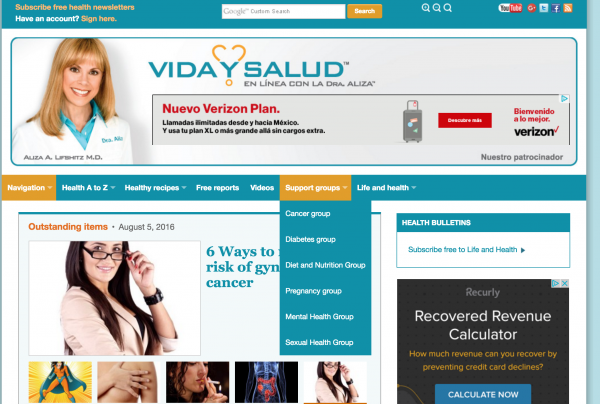
Read more about the community content business model.
Classified Content Business Model
Classified website business models are the modern day equivalent of what used to appear in the back of many newspapers and B2B magazines.
Listings for products, services, and jobs are the backbone of the classified content business model. They are, as we are fond of saying, a great way to take lots of small checks (as opposed to sponsorships where publishers take fewer, larger checks).
These websites are typically open and free for users. Revenue is generated by taking payment for listings, although some categories of listings may be free to post as well. For example, most job listing sites charge employers for listing job openings but a person seeking a job may be able to post a “position wanted” listing for free.
As with the calendar content business model, classified listings are usually fairly short and not easily optimized for search engines. Not to mention, they often expire just as quickly as they’re indexed. So, while some large freestanding classified websites exist in the general consumer market, most niche sites are associated with an SEO-driving content Portal and other content business model sites as a way to attract traffic and email sign ups.
Example: In the mass media, it’s hard to find a better example than Craigslist. Craigslist includes free and paid listings, depending on the category, which may be for goods, services, or jobs. However, when plugged into a multiplatform magazine business model, you should look toward Boating magazine, which has Boating Classifieds. You can access this section of their website through the main navigation titled “Classifieds” next to Marketplace and Videos.
Read more about the classifieds content business model.
The next 5 business models are premium in their top-level function, meaning they are used primarily to generate revenue directly from the audience, and occasionally also generate revenue from sponsors.
Book Content Business Model
A book website is built to sell a catalog of multiplatform books and reports. The interesting thing about the book website business model is this: The largest online retailer in the world started out as a bookstore. For those of you old enough to remember, Amazon has not always been the unchallenged retail king of the internet, selling everything from air conditioners to Ziploc bags. But now Amazon is the world’s largest online retailer by revenue. What we now think of as the most futuristic, virtual retail company of all time got its start using the internet to sell good old-fashioned print books.
As a magazine publisher, you may not be focusing on books, but we have several clients who have such large subscriber lists that every time they promote a book to their promotional list, they can count on instant profits, sometimes in the thousands of dollars, because the books are delivered digitally.
Books are a one-time cost to create, and when delivered digitally, can generate revenue without any more added effort. The production of a book can be anywhere from a thousand dollars (smaller white papers) to thousands of dollars (full length handbooks), but we also have clients who sell $10 ebooks that are 25-50 pages.
Does this sound like something you could benefit from? Is there a series or column from your magazine you could easily repurpose? Content recycling can come in really handy for this business model.
Example: Amazon, of course, needs practically no introduction, it’s the world’s largest online retailer by revenue. However, a niche publisher example is University Health Publications, who maintains a health report library and offers annual updates at a reduced cost.
Nutrition Action is another example. They have a bookstore where visitors can purchase a variety of nutrition-focused books in digital ($10), print ($12) and digital formats, with a print and digital bundle sold for $14. In their initial content brainstorm to create these books, they went after common topics that their competitors were targeting before they realized that they have a unique niche with little competition: food safety What’s better is that their prized donors are putting up funds to support the organization because they want to further research into food safety.
Read more about the book content business model.
Magazine Content Business Model
The magazine content business model is set up to build subscriptions for a related print or digital magazine and to provide access to issues of the magazine. When the internet dawned, it was one of the first subscription websites invented, as mass media magazine publishers quickly jumped on the bandwagon.
A website is only a magazine website if the user can view or download an issue of a magazine – one that is linear and periodic, has pages and a regular frequency, and can be viewed in HTML, downloaded as a PDF, or downloaded to a mobile device.
Many people refer to any website that carries a legacy magazine brand and magazine content as a magazine subscription website; however, if the content is not organized in a magazine format and issues cannot be viewed or downloaded, it doesn’t meet the basic criteria of being a magazine subscription website.
Example: When it comes to mentor sites, our Mequoda niche example is I Like Crochet, where Mequoda created for its innovative publisher and longtime client, Stuart Hochwert, what we believe is the first-ever actual website magazine. I Like Crochet magazine is available both as a web edition, complete with page-by-page navigation and a linear, magazine reading experience available on any platform or device with Internet access and as a tablet edition.
Read more about the magazine content business model.
[text_ad]
Newsletter Content Business Model
A newsletter content business model and its website is set up solely to sell subscriptions for a related print – or, even cheaper to produce, digital – newsletter. Often, the site also provides access to issues of the newsletter.
A newsletter subscription website is commerce-based, with an overall objective of increasing product sales and providing customer service to existing subscribers. These sites are fairly simple: Usually the home page consists of a free area, with content that focuses on the benefits of becoming a subscriber to the related publication – a sales letter – and conversion architecture where a visitor can subscribe.
Some newsletter sites have a password-protected private area, where paid subscribers can view an HTML version of the current issue of the print or digital newsletter or download it in PDF format, as well as access and/or download back issues and other premium content. Like all premium models, a newsletter website is typically paired with an affinity (free) model like a portal or community which promotes the newsletter website.
The newsletter website does not produce any free content, so the heavy lifting of SEO and social media is left up to their affinity site. Editorial staff can be minimal, though each writer must be an expert in the newsletter’s specialized field, rather than a generalist as many magazine editors and writers are.
While easier and cheaper to publish than glossy magazines, newsletters, particularly those in the investing space, have always commanded higher prices than even the fattest consumer magazine, where the urgent need to maintain advertiser rate base led over the decades to insanely low prices for a year’s subscription. Thus an aspiring publisher, with expertise in a specific field, can most easily jump into the newsletter space.
Example: At TSI Wealth Network, you’ll find they have a free portal with multiple free articles publishing every day, which is paired with a newsletter content business model. If you’re a subscriber, when you click into any of the newsletters, you’ll get the option to view the index of each issue and download the PDF or view the issue online.
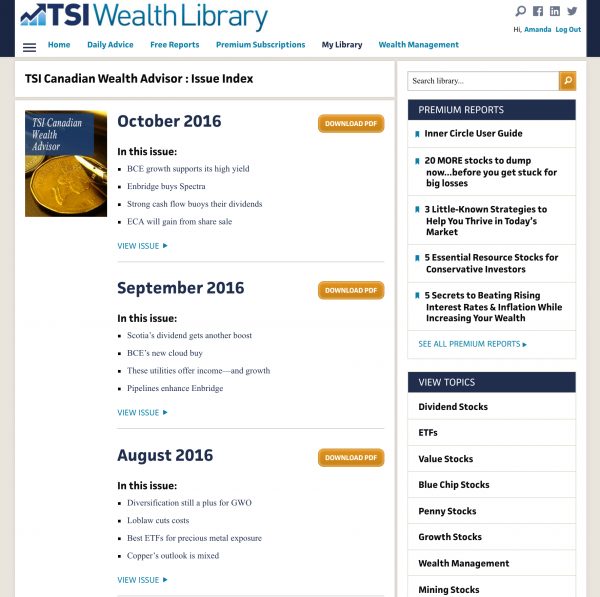
Read more about the newsletter content business model.
Course Content Business Model
Years ago, many publishers thrived by producing loose-leaf print training services that were typically membership-based. Today, those print training products have been replaced by the course website business model, now with the ability to not only produce their own training videos and other 21st-century materials, but to create custom portals for corporations to produce their materials and upload them.
If a publisher has a course content business model, they may create a single course or collection of lessons or activities that the user can mix and match to create his or her own course. However, the publishing frequency, unlike a magazine, could be relatively low.
Niche publishers have a great opportunity in learning since the kind of information these audiences need is not provided widely. Consumers increasingly turn to trusted brands and publishers to find the information that can make a difference for them professionally or personally.
Example: Leadercast has a robust premium course content business model called Leadercast Now in which members can watch short videos of respected world leaders from all walks of life and business discussing strategies, techniques, and principles of leadership. Members can also track videos they’ve watched, videos they plan to watch, and their own progress at executing a range of hands-on exercises to reinforce learning in a personal dashboard called the Activity Manager.
Read more about the course content business model.
Event Content Business Model
An event website’s sole purpose is to provide users with details about an event and sell tickets.
The appeal of hearing, seeing, and speaking with actual people and touching real-life objects has never gone away, and thus the event business is not only surviving, but thriving in an otherwise digital era.
The internet still plays a role, however: Now an event publisher can promote and sell tickets to an event in living color on a website. And a very successful content business model it can be, even for publishers who only added events to their legacy offerings in recent years.
Unlike subscription-based business models, event content business models are retail websites that are purely transactional, and must be paired with a content-rich portal subscription website to attract traffic.
Alternately, an event website may pay for website traffic using third-party media such as display networks, text ad networks, and other publishers’ email newsletters and websites.
These sites are not the same as event promoting websites that allow users to post their own events.
Example: Our longtime client and fellow Boston-based organization, the Program on Negotiation at Harvard Law School, is an excellent mentor site for anyone launching a niche media event site. After adding a portal subscription website, PON’s revenues grew more than 63%, its programs are filled to capacity and they’ve added new programs as well. Meanwhile, the cost of marketing via direct mail was 32% of the budget; today their total marketing spend is a mere 7%, with all event tickets now generated from their own Mequoda portal subscription website and their email list.
Read more about the events content business model.
Understanding what new content you need to create and what can be repurposed into new content business models is crucially important for creating an efficient and profitable multiplatform publishing business.
